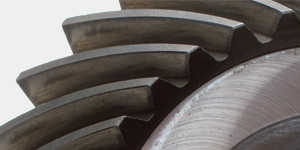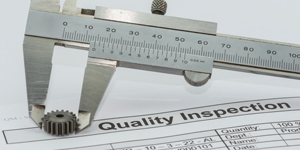Tooth Tips: Nick Sudzum
After a replacement set of gears have been properly manufactured and thoroughly inspected in a tester to insure that the proper contact pattern has...
Tooth Tips: Nick Sudzum
My last column covered the basics of the reverse/inverse engineering process, which is only the tip of the iceberg. Let's assume that everything went...
Tooth Tips: Nick Sudzum
Regardless of type or style, when bevel gears need to be replaced and manufacturing drawings are no longer available, your gear can still be...
Tooth Tips: Nick Sudzum
Bevel gears are predominantly manufactured using low carbon alloy materials and then carburized and hardened, or case hardened, with an effective case depth of...
Tooth Tips: Nick Sudzum
As described in last month's column, gear tooth problems are usually recognized at higher frequencies with exact multiples from your readings on your gearbox....
Tooth Tips: Nick Sudzum
Vibration can be defined as the repetitive periodic motion of a machine and/or its components such as gear trains, gear drives, gear boxes, drive...
Tooth Tips: Andy Milburn, P.E.
Just as a doctor uses blood tests to monitor our health, oil analysis can be a powerful tool to monitor the condition of both...
Tooth Tips: Andy Milburn, P.E.
This months' installment is the second of three on gearbox lubrication. This column will cover issues related to the selection of gear and bearing...
Tooth Tips: Andy Milburn, P.E.
Proper lubrication of gears and bearings is essential to their operation and to achieving long life. It is a very complicated subject, and an...
Tooth Tips: Andy Milburn, P.E.
The parameters that usually have to be examined are bearing deflections, shaft deflections, pinion torsional windup, housing deflections, and external forces on the input...
Tooth Tips: Andy Milburn, P.E.
A frequently asked question is "How good does the alignment have to be?" This column and the next will attempt to answer that question....
Tooth Tips: Gear Accuracy Charts Pt. 3
Pitch measurements determine the accuracy of the tooth locations around the gear. These measurements are typically made with either a single or double probe...
Tooth Tips: Gear Accuracy Charts Pt. 2
Gear Accuracy Charts -- Part 2
As noted in my last Tooth Tips column, AGMA has made significant changes in the accuracy classification system....
Tooth Tips: Andy Milburn, P.E.: Gear Accuracy Charts Pt. 1
Gear Accuracy Charts -- Part 1
Gear accuracy charts can be confusing the first time you see one, so this is the first of three...
Tooth Tips: Andy Milburn, P.E.
When failures occur, especially on a piece of critical equipment, the first priority is usually to get the equipment operating again. Unfortunately this can...
Tooth Tips: Andy Milburn, P.E.
Most mechanics are familiar with the concept of checking gear contact on bevel gear sets to ensure that they are set up correctly, but...
Tooth Tips: Donald R. McVittie P.E.
What load can you expect a gear set to carry? An accurate answer would be too complicated for this column, and while a simple...
Tooth Tips: Donald R. McVittie P.E.
Everyone knows that a pair of gears needs some backlash so that the teeth aren't "pinched" (running with both flanks touching). Many people, though,...
Tooth Tips: Donald R. McVittie P.E.
A favorite gear engineer's saying is "if the input shaft turns and the output shaft doesn't, the gear drive has failed." That "definition" implies...
Tooth Tips: Donald R. McVittie P.E.
Sometimes there simply is no easy fix for a misalignment problem. Maybe the box is bored out of line, the gears weren't matched originally,...





































